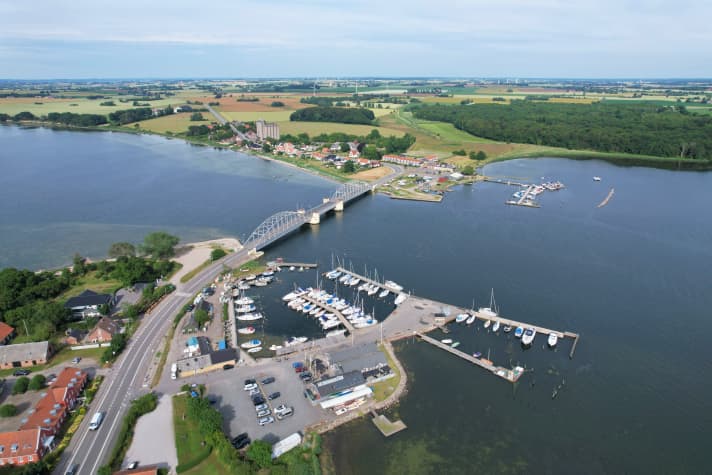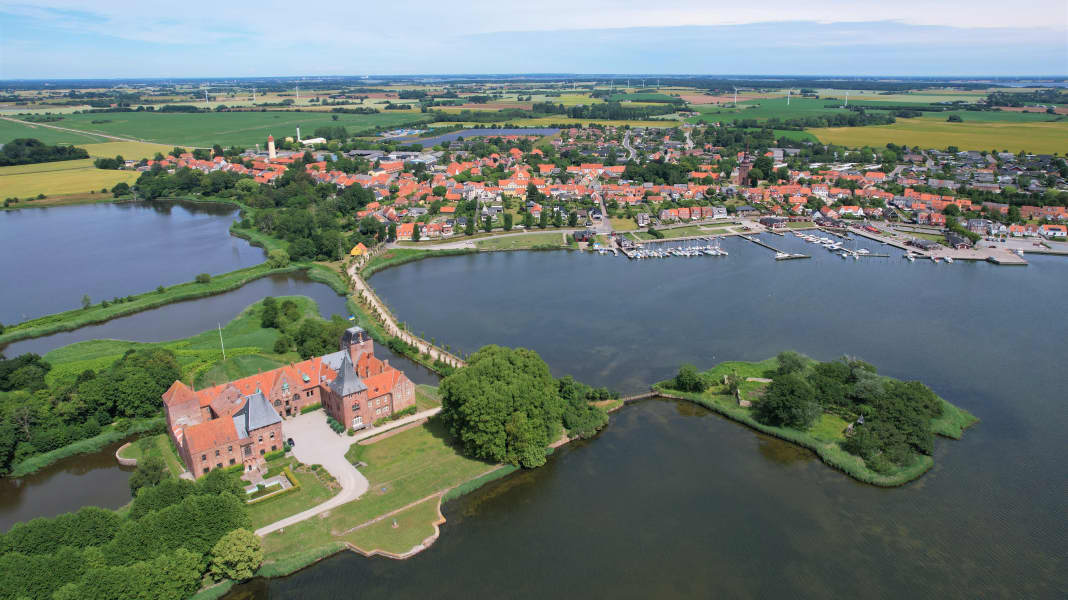
1. nysted
The Guldborg Sound separates the neighbouring islands of Lolland and Falster by around twenty nautical miles. The small town of Nysted on the south coast of Lolland is an atmospheric starting point for the passage. The town has been of economic and strategic importance since the Middle Ages. The moated castle of Aalholm to the west of the harbour still bears witness to this today. Guests on their own keel can moor at the jetties of the City harbour or the Nysted Sejlklub below. The approach from the south takes place along the eastern side of the Rødsand offshore wind farm, which is considered the most powerful in the world with a total of 162 wind turbines and a total output of more than 370 MW, crosses the sandbank of the same name with a buoyed fairway and finally leads - again buoyed - to the harbour of Nysted.
- The Nysted harbour at Guldborgsund on Google Maps
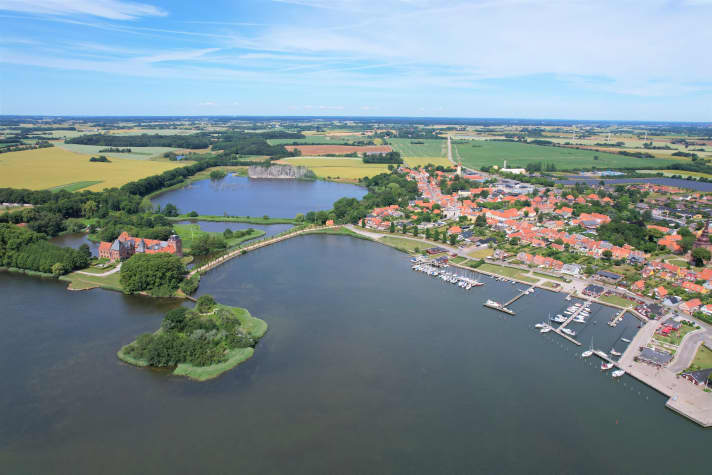
2 Gedser
Skippers heading for Guldborgsund from Warnemünde or further east make their first landfall at Gedser, or more precisely at Gedser Odde, the southernmost point of the island of Falster and the whole of Denmark. While the large ferry harbour with the Scandlines terminal is no place for pleasure craft, the buoyed fairway of the Rødsand Rende, which branches off in front of the pier heads, continues under the coast to the western side of the headland. There lies the well-protected Lystbådehavn from Gedser Almost completely surrounded by greenery, but with a restaurant and service. To the south of the harbour is the Kroghage nature reserve and the beach. About one kilometre away Det sorte Geomuseum Insight into the geological past of today's islands at Guldborgsund.
- The Gedser marina on Google Maps
- The Gedser ferry harbour on Google Maps
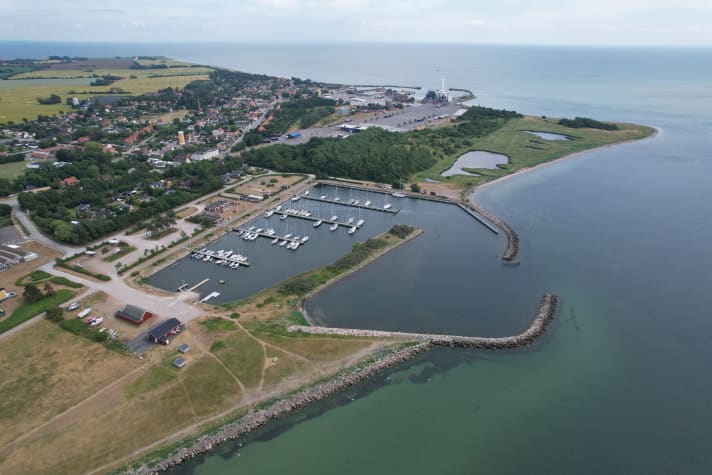
3. toreby
Two movable bridges cross the Guldborg Sound. Both are designed as bascule bridges and have a clearance height of 4 metres when closed. Coming from the south, the Kong Frederik IX. Broen between Sundby and Nykøbing (open from 7 am to 7 pm; 7 am to 8 pm in June, July and August; an illuminated sign indicates the next opening). Just to the north, on the Lolland side, is the marina of the Toreby Sejlklub the tranquil alternative to Nykøbing on the other shore (see number 4.). You can barbecue at the clubhouse in summer. About two kilometres to the north on Guldborgsund lies the Middelaldercentret a historical adventure park with many live events.
- The Toreby marina at Guldborgsund on Google Maps
- The King Frederik IX Bridge via the Guldborgsund on Google Maps
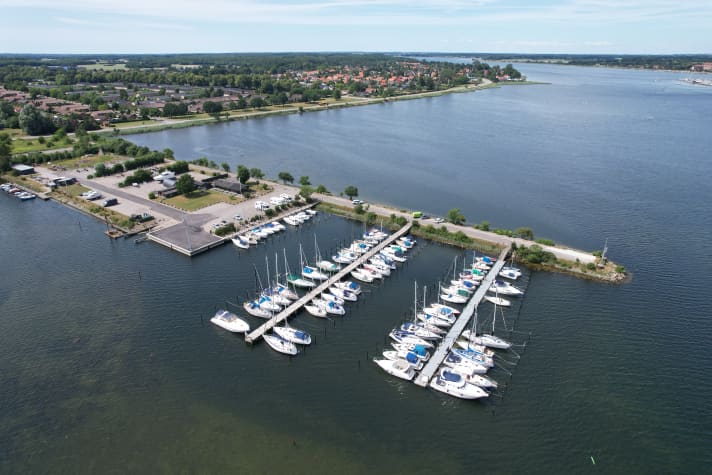
4. nykøbing
The largest town on the Guldborg Sound and also the capital of Falster is Nykøbing with around 16,000 inhabitants. This is the place to be if you are looking for urban flair - or good shopping facilities. In the modern marina there are guest berths at the Sejlforeningen Vikingen and the Badklubben Guldborgsund. From here, it is only a ten-minute walk to the tranquil alleyways of the town centre. There are shops, cafés and restaurants along Østergågade between the market and the monastery church. Right next to the historic Tsar's House, which is said to have once housed Peter the Great, you will also find the Museum Obscurum with the collection of mysterious objects gathered by the merchant Cornelius Rödder in the 19th century.
- The Nykøbing marina at Guldborgsund on Google Maps
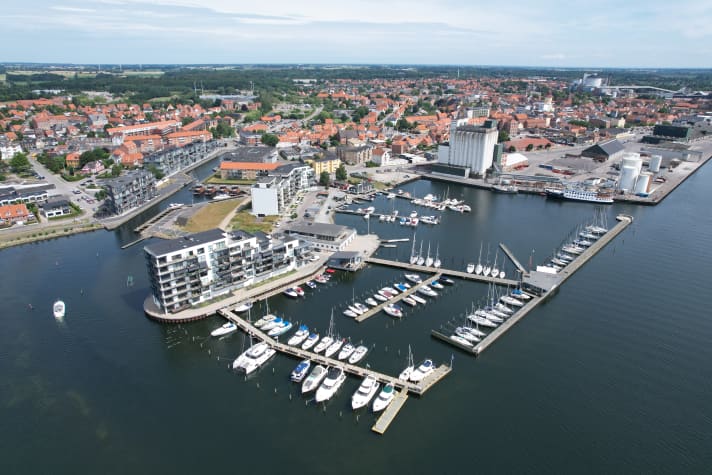
5 Guldborg
Finally, in the far north of Lolland lies the small town to which the entire sound owes its name: Guldborg. This is also where the second road bascule bridge crosses its narrowest point, at around 150 metres wide. North of the Guldborgsundbroen (clearance height closed: 4 metres; open from 8 a.m. to 8 p.m.; registration: VHF 16 or tel. +45 54 77 00 17 ; flashing signal indicates preparation for the opening), the shorelines of the two neighbouring islands then recede and the sound flows into the Småland fairway (Danish: Smålandsfarvandet). This large bay, which is bordered to the north by Sjælland with the capital Copenhagen, takes its name from the "small lands", the historical collective name for the islands of Lolland, Falster and Møn. Guests will find jetties with pile boxes in the harbour of the Guldborgland Bådelaug (front in the picture).
- The Guldborg marina at Guldborgsund on Google Maps
- The Guldborgsundbroen via the Guldborgsund on Google Maps
